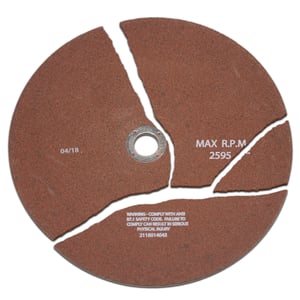 Having an abrasive cut-off wheel break in the middle of a cut is scary and can happen even on the best equipment. Replacing the broken blade interferes with your material lab’s smooth workflow. If your sectioning blades are breaking frequently, you might be experiencing some common failures. Below, we outline five of the most frequent causes of a broken blade and how to fix them.
Having an abrasive cut-off wheel break in the middle of a cut is scary and can happen even on the best equipment. Replacing the broken blade interferes with your material lab’s smooth workflow. If your sectioning blades are breaking frequently, you might be experiencing some common failures. Below, we outline five of the most frequent causes of a broken blade and how to fix them.
- The Specimen is Moving In the Vise/Clamp.
Any movement of the specimen during sectioning can cause issues, including blade breakage. Making sure the specimen being sectioned is securely held in place is of the utmost importance. Use two vises (left and right) if possible. - Too Much Force Is Being Applied Or Applied Too Quickly.
The blade should be introduced to the specimen slowly and carefully. Once a sectioning groove has been established, cutting speed can increase and more force can be applied. Let the blade do the work. - The Blade is Getting Pinched By The Specimen.
Heat-treated or cold-worked parts can possess significant residual stresses. As sectioning progresses, these stresses are free to relieve themselves, causing the kerf to narrow and pinch the blade. The effects of this phenomenon can be reduced by utilizing a manual or automatic “pulse cut”, which involves moving the blade in and out of the cutting position. - The Blade Is Becoming Warped.
It is important to store abrasive sectioning blades lying flat, in a cool, dark, and dry location. Improper storage can result in curved blades, which do not travel through the specimen straight. Since they have poor lateral strength, blades can break when they are deflected from a straight path through the part. - The Incorrect Blade Is Being Used.
Successful sectioning using an abrasive cut-off wheel relies on fresh abrasive particles being available at the cutting interface. Using a blade with too hard of a binder can hold onto worn particles and thereby reduce the cutting action. When the operator increases the cutting force to counteract this, the blade may be overstressed and break. Make sure to use a blade that is compatible with the material being sectioned.
Taking the proper precautions to prevent broken blades can save you both time and money. If you are still experiencing frequent breakage even after taking into account the causes listed above, let us know. Contact us at met_tips@leco.com, and we will have an expert reach out to help you get your lab running smoothly once again.


